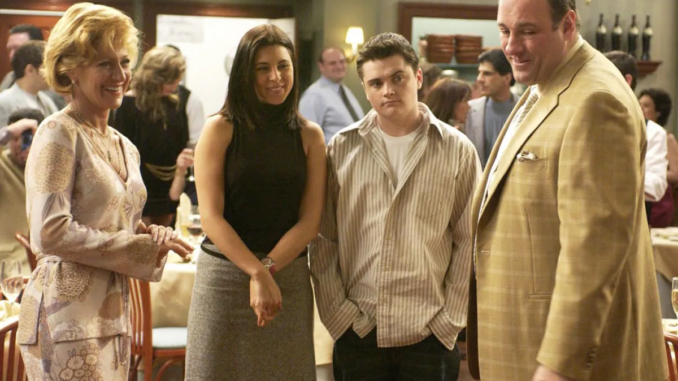
“The Sopranos” premiered 25 years ago, and as new generations find the Shakespearean-inspired mob story, the show’s alluring female characters stand out from those found in the usual gangster films.
In the series, New Jersey mobster Tony Soprano (James Gandolfini) struggles to balance his home life and being the leader of a criminal organization, turning to therapy sessions with a psychiatrist. “The Sopranos” really shines when it focuses on the nuances of Tony’s home life through his love for his family: his homemaker wife Carmela (Edie Falco), his rebel son AJ (Robert Iler), his academically inclined daughter Meadow (Jamie-Lynn Sigler) and his “cousin” and protégé Christopher (Michael Imperioli).
But the series also puts the spotlight on the women in ways we hadn’t seen before. While mobster movies like “Goodfellas” and “The Godfather” portray wives and girlfriends as props of the men’s lavish lifestyle, wealth and success, “The Sopranos” allows its audience to peek behind the curtain into the internal world and dilemmas of those women. Television offers more time onscreen to dive deeper into each female character, allowing them to be nuanced and complicated women — not mere status symbols or accessories. Creator David Chase said that when he imagined the show, it would have “really good roles for women.”
The men and their crimes are the surface-level appeal in “The Sopranos,” but characters like Tony’s wife, Carmela and Christopher’s girlfriend and eventual fiancée Adriana (Drea de Matteo), are the pulsing heart of the series. The show becomes so much more than its toxic, hyper-masculine mob violence through the women’s perspectives as the women closest to criminal men. It’s through these lead female characters that the audiences see how the vapid role of a mob wife or fiancée can be so much more than that. And how for the most part, the lifestyle that they trade their freedom for has grave, fatal consequences.

In the most stereotypical portrayals, mob wives or love interests are known for their life of opulence and style. One might recall the expensive slinky satin gown and the jewels draped on Michelle Pfeiffer’s character Elvira in “Scarface.” Mob wives exude that conspicuous luxury, and therefore have a knack for shopping and fashion to help them keep up appearances. Internally, they are as shallow as a kiddie pool, always used as plot devices or damsels in distress. As an audience, we revel in characters like this. They exist as our gateway into their fictional lives of wealth and access. It’s why the characters are largely associated with their iconic images decades beyond a film’s shelf life.
But “The Sopranos,” turns the vapid stereotype on its head through Carmela who on the surface may seem like she’s just about appearances but is working tirelessly behind the scenes. Even though she is married to a mobster, she largely stays out of his business because she is busy running her household. She is a typical housewife with a beautiful, large New Jersey home and two kids. She always has a perfect blowout, fresh from the salon, French nails and a Juicy Couture and Fila tracksuit to match. She’s got all the makings of an upper-class stay-at-home mom.
When she’s not tending to her kids and Tony’s every need, she’s shopping with her daughter and friends — her clothes and aesthetics inspired by Italian designers like Pucci, Adrianna Vittadini and Robert Cavalli. Or she’s receiving pity gifts from Tony like a massive sapphire ring for her birthday and a matching necklace at Christmas, a top-of-the-line Porsche, and an extravagant fur coat. The gifts are never-ending just like Tony’s faults in their marriage. And the gifts are almost always illicit obtained by Tony or one of his goons.
